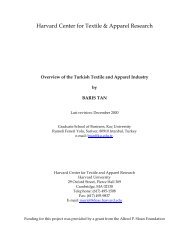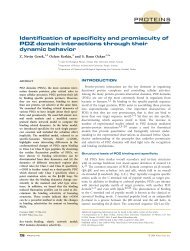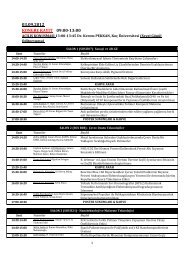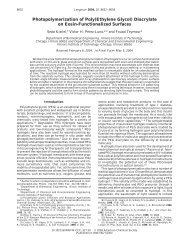CONVERSION AND REACTOR SIZING
CONVERSION AND REACTOR SIZING
CONVERSION AND REACTOR SIZING
Create successful ePaper yourself
Turn your PDF publications into a flip-book with our unique Google optimized e-Paper software.
Example: Let’s consider the isothermal gas-phase isomerization:<br />
A → B<br />
Draw -1/r 1/rA vs X:<br />
-1/r A<br />
X<br />
X -rA(mol/m3s) 1 / -rA 0 045 0.45 222 2.22<br />
0.1 0.37 2.70<br />
0.2 0.30 3.33<br />
0.4 0.195 5.13<br />
0.6 0.113 8.85<br />
0.7 0.079 12.7<br />
08 0.8 005 0.05 20 20.0 0<br />
[T = 500 K]<br />
[P = 830 kPa = 8.2 atm]<br />
initial charge was pure A<br />
We can use this figure to size flow reactors for<br />
different entering molar flow rates.<br />
Keep in mind :<br />
1. if a rxn is carried out isothermally, y, the rate is<br />
usually greatest at the start of the rxn, when<br />
the conc’n of reactant is greatest. (when x ≈<br />
0 → -1/rA is small)<br />
2. As x → 1, –rA → 0 thus 1/-rA → ∞ & V → ∞<br />
→ An infinite reactor volume is needed to reach complete conversion.<br />
For reversible reactions (A ↔ B), the max X is the equilibrium conversion<br />
Xe. At equilibrium, rA ≈ 0.<br />
As X → Xe, –rA → 0 thus 1/-rA → ∞ & V → ∞<br />
→ An infinite reactor volume is needed to obtain X e.<br />
8



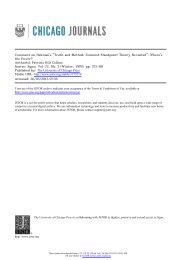
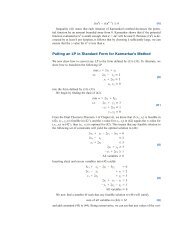
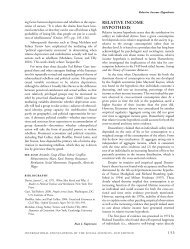
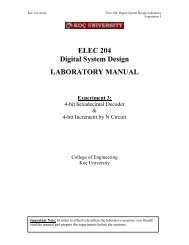
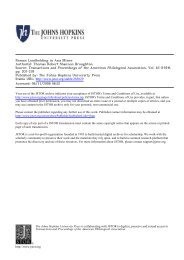
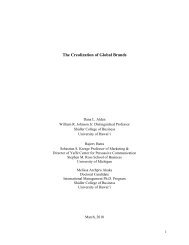
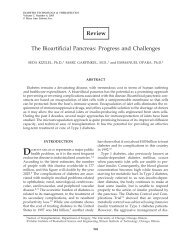
![]_[O](https://img.yumpu.com/10363126/1/190x138/-o.jpg?quality=85)
